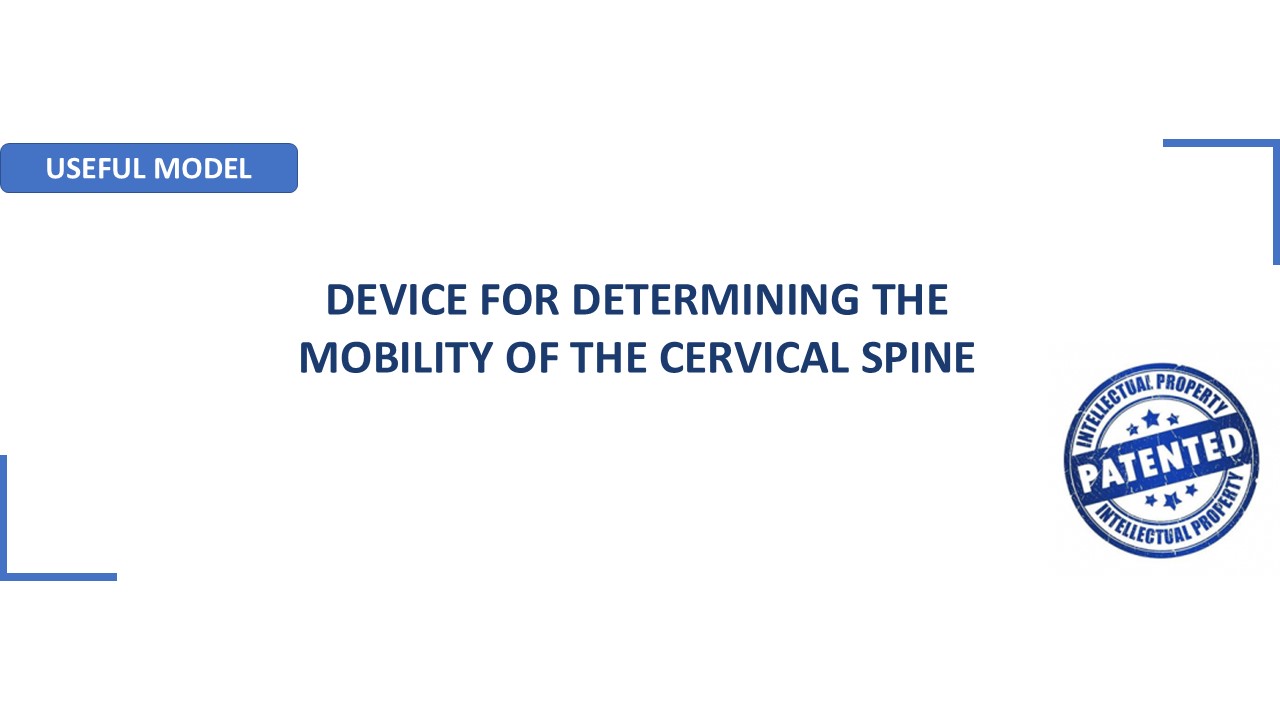The device for determining the mobility of the cervical spine contains a chair with a backrest and means for measuring the mobility of the cervical spine in degrees in the frontal, sagittal and vertical planes. A metal quadrangular hollow profile is vertically fixed on the outer surface of the chair back, into which a tetrahedral rod is telescopically fixed at a certain height, with a bracket with two cheeks fixed horizontally and simultaneously in the sagittal plane. The lower cheek is spring-loaded and has two pins and recesses for fixing a horizontal hemisphere into the corresponding recesses, which is made with the ability, if necessary, to be inserted into the bracket in the center of the bending arc from the patient, and the vertical hemisphere is fixed to the upper part of the rod with an upward bending arc in the frontal plane, which are equipped with a scale in degrees, having a mark of zero degrees in the center of the hemisphere and marks up to and including 90 degrees in both directions at the distal ends of the hemispheres. The projections of the zero marks of the scale of both hemispheres coincide both in the sagittal plane and in the horizontal plane. The metal tetrahedron rod, which is part of a quadrangular hollow profile, is made with the possibility of fixing at a certain height with a wing screw, and the horizontal and sagittal hemispheres are made of lightweight but rigid material


